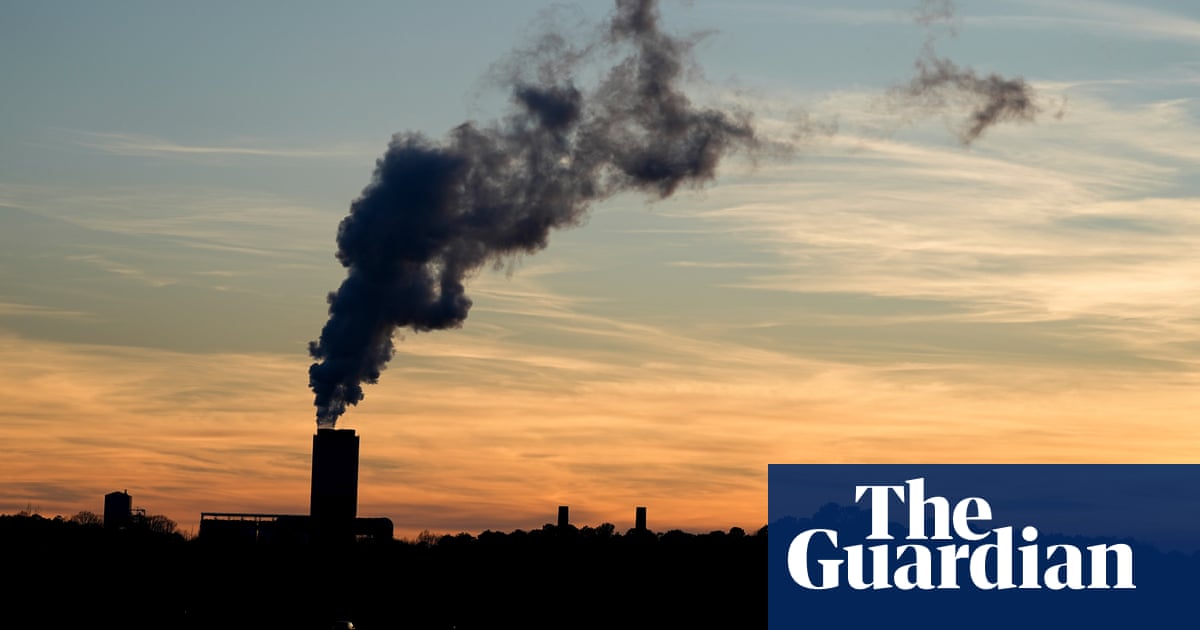Coal-fired power plants would be forced to capture smokestack emissions or shut down under a rule issued on Thursday by the Environmental Protection Agency (EPA).
New limits on greenhouse gas emissions from fossil fuel-fired electric plants are the Biden administrationâs most ambitious effort yet to roll back planet-warming pollution from the power sector, the nationâs second-largest contributor to the climate crisis. The rules are a key part of Joe Bidenâs pledge to eliminate carbon pollution from the electricity sector by 2035 and economy-wide by 2050.
The rule was among four separate measures targeting coal and natural gas plants that the EPA said would provide âregular certaintyâ to the power industry and encourage them to make investments to transition âto a clean energy economyâ. They also include requirements to reduce toxic wastewater pollutants from coal-fired plants and to safely manage so-called coal ash in unlined storage ponds.
The new rules âreduce pollution from fossil fuel-fired power plants, protect communities from pollution and improve public health â all while supporting the long-term, reliable supply of the electricity needed to power America forwardâ, the EPA administrator, Michael Regan, told reporters at a White House briefing.
The plan is likely to be challenged by industry groups and Republican-leaning states. They have repeatedly accused the Democratic administration of overreach on environmental regulations and have warned of a looming reliability crisis for the electric grid. The rules issued on Thursday are among at least a half-dozen EPA regulations limiting power plant emissions and wastewater pollution.
Environmental groups hailed the EPAâs latest action as urgently needed to protect against the devastating harms of the climate crisis.
The power plant rule marks the first time the federal government has restricted carbon dioxide emissions from existing coal-fired power plants. The rule also would force future electric plants fueled by coal or gas to control up to 90% of their carbon pollution. The new standards will stave off 1.38bn metric tons of carbon pollution through 2047, equivalent to the annual emissions of 328m gas cars, the EPA said, and will provide hundreds of billions of dollars in climate and health benefits, measured in fewer premature deaths, asthma cases, and lost work or school days.
Coal plants that plan to stay open beyond 2039 would have to cut or capture 90% of their carbon dioxide emissions by 2032, the EPA said. Plants that expect to retire by 2039 would face a less stringent standard but still would have to capture some emissions. Coal plants that are set to retire by 2032 would not be subject to the new rules.
Rich Nolan, president and CEO of the National Mining Association, said that through the latest rules, âthe EPA is systematically dismantling the reliability of the US electric gridâ.
He accused Biden, Regan and other officials of âignoring our energy reality and forcing the closure of well-operating coal plants that repeatedly come to the rescue during times of peak demand. The repercussions of this reckless plan will be felt across the country by all Americans.â
after newsletter promotion
Regan denied that the rules were aimed at shutting down the coal sector, but acknowledged in proposing the power plant rule last year that âwe will see some coal retirementsâ.
The proposal relies on technologies to limit carbon pollution that the industry itself has said are viable and available, Regan said. âMultiple power companies have indicated that [carbon capture and storage] is a viable technology for the power sector today, and they are currently pursuing those CCS projects,â he told reporters on Wednesday.
Coal provided about 16% of US electricity last year, down from about 45% in 2010. Natural gas provides about 43% of US electricity, with the remainder from nuclear energy and renewables such as wind, solar and hydropower.
The power plant rule âcompletes a historic grand slamâ of major actions by the Biden administration to reduce carbon pollution, said David Doniger, a climate and clean energy expert at the Natural Resources Defense Council. The first and most important action was passage of the 2022 climate law, officially known as the Inflation Reduction Act, he said, followed by separate EPA rules targeting tailpipe emissions from cars and trucks and methane emissions from oil and gas drilling.



